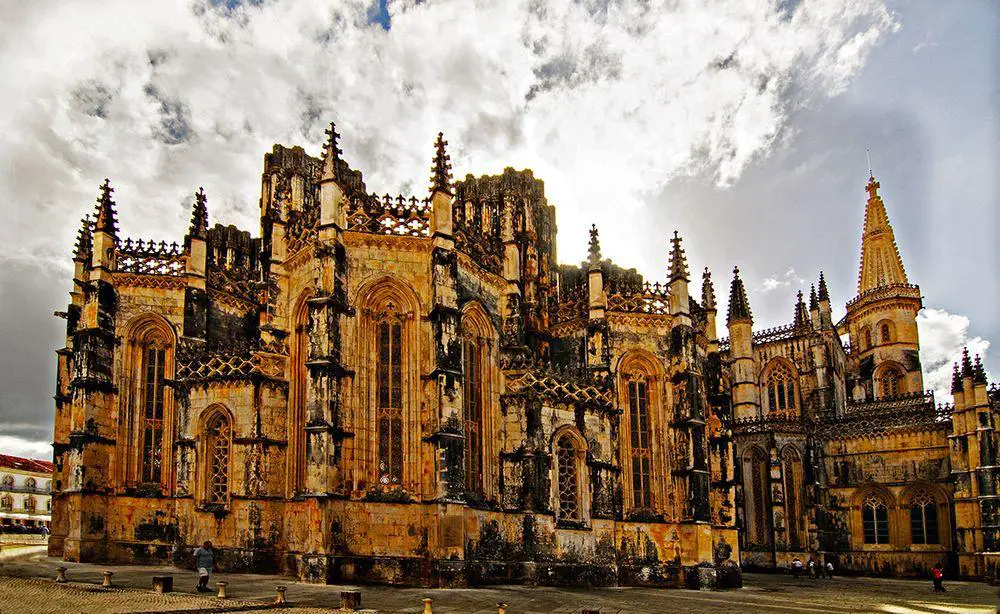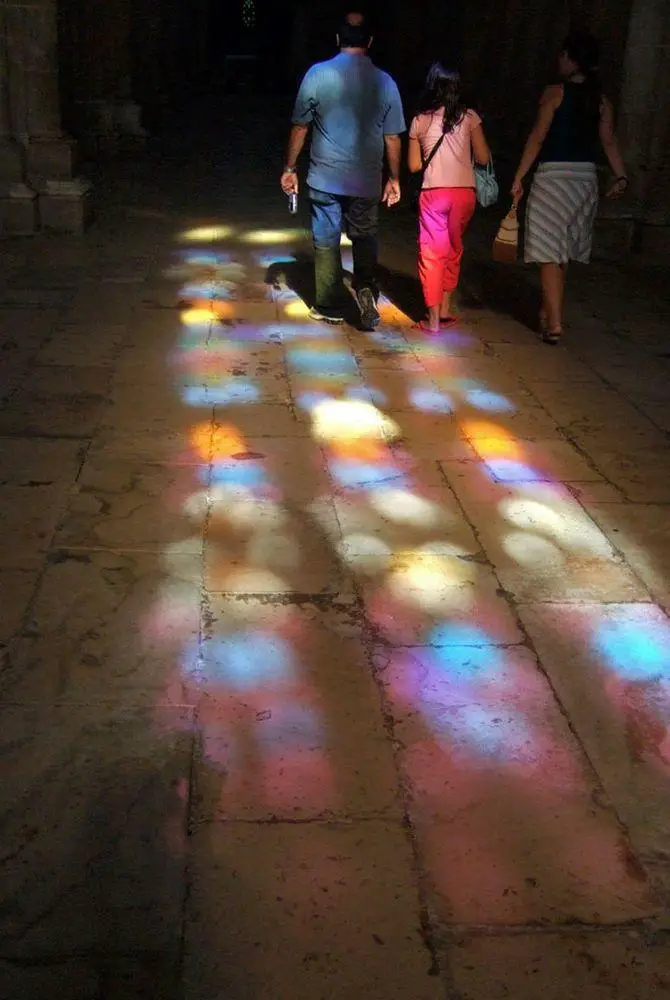Christian monasteries 🢔 Religious architecture 🢔 Architectural wonders 🢔 Categories of wonders
Wonder
Batalha Monastery
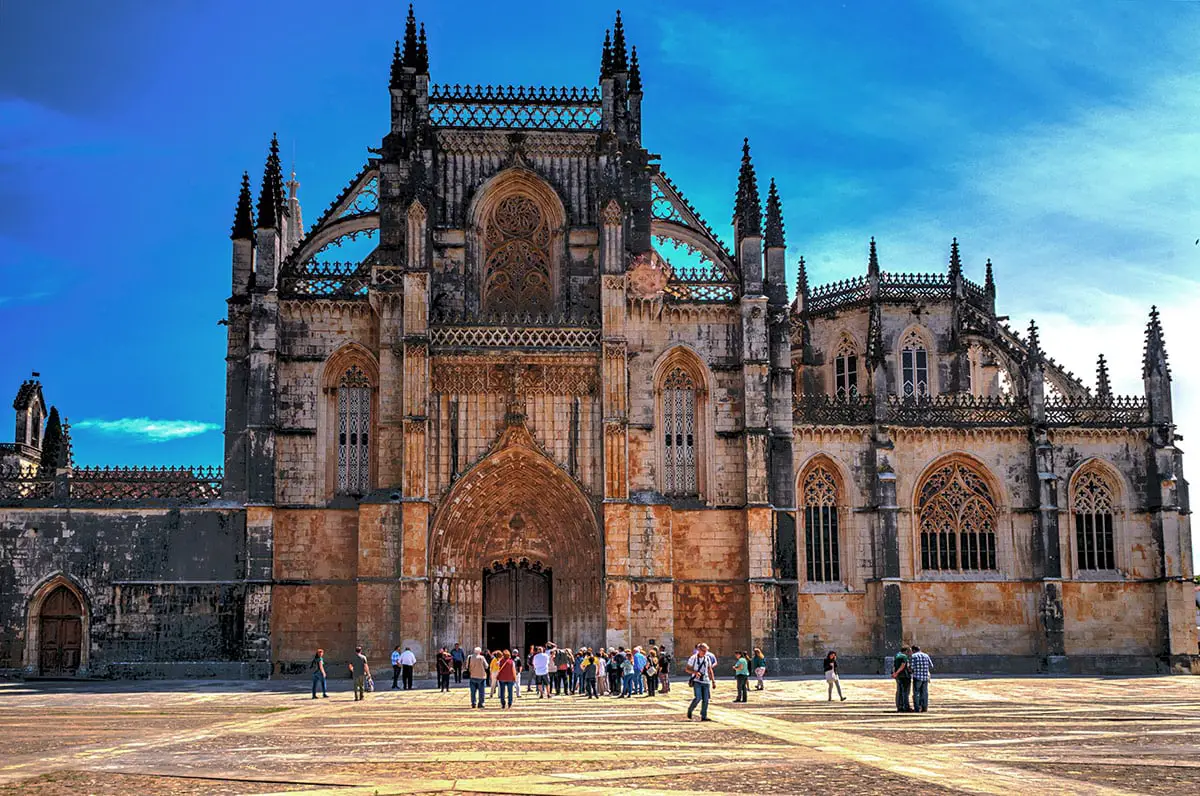
 In short
In short
Batalha Monastery is not just a monastery – it is a lot more than this, a monument to the unity of nation and union with England, an expression of the power of Aviz dynasty and above all – a wonderful monument of architecture and art.
 50.0%
50.0%
GPS coordinates
Name in Portuguese
Alternate name
Architectural style
Architects
Founded
Year of construction
Order
Branch of Christianity
UNESCO World Heritage status
Map of the site
If you see this after your page is loaded completely, leafletJS files are missing.
 In detail
In detail
History
Portugal is not Castile!
When the Iberian peninsula was taken over by Christian states in the 11th – 15th centuries, the most powerful among them was Castile. Castilian kings strived to conquer everything around them – not just Islamic lands but also their Christian neighbors. Portugal was not an exception to this – country was endangered by the invasion of Castilians at the end of the 14th century.
On August 15, 1385, there took place the decisive battle between Portuguese and Castilians – the Battle of Aljubarrota. Portuguese under the leadership of King John I (Dom João I) won, thus attesting the independence of Portugal and serving as an introduction to the "golden times" in the history of Portugal when this small country took disproportionally large importance in global politics.
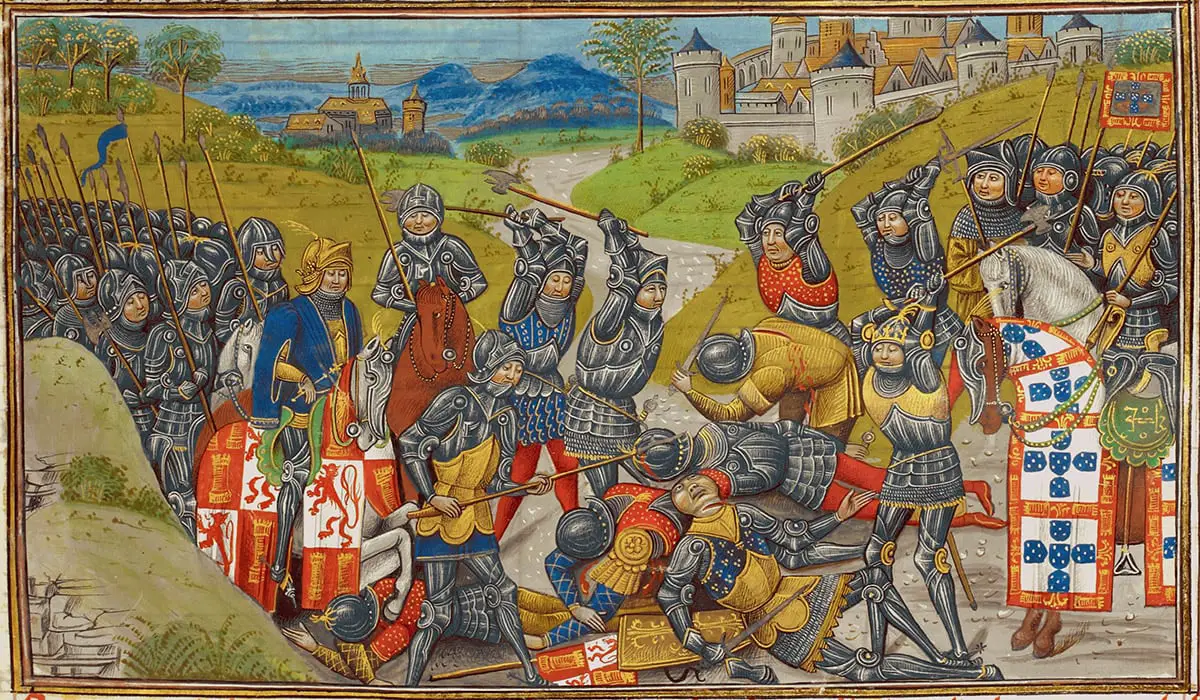
Showcase of Portuguese kingdom
Victory in the Battle of Aljubarrota was attributed to the assistance of Virgin Mary. In order to commemorate this prominent event and to promote the unity of nation King John I – the first king in the Aviz dynasty – ordered to build a church and monastery of unseen beauty and scale, devoting it to Virgin Mary.
Construction of this amazing building took more than a century and there were fifteen main architects. Monastery of Batalha (Monastery of the Battle) drained manpower and financial resources of Portugal but at the same time this great building helped to develop arts, architecture and structural engineering.
Allies overseas
Almost unique feature in the history of Portugal is its long standing alliance with England. Both countries relieved each other in darker moments of their history militarily but there was also a profound cooperation in trade and experience exchange in arts and sciences.
English influence is seen also in the architecture and art of Batalha Monastery: Portuguese masters have used features of specific English flavour in Gothic style – Perpendicular Gothic.
History of construction
Construction of monastery was started soon after the battle – in 1386. First architect here was Alfonso Domingues who led the works until his death in 1402. Domingues planned the layout of the present day structures. Initially the structure was designed mainly in Rayonnant Gothic style, with some influence of English Perpendicular style.
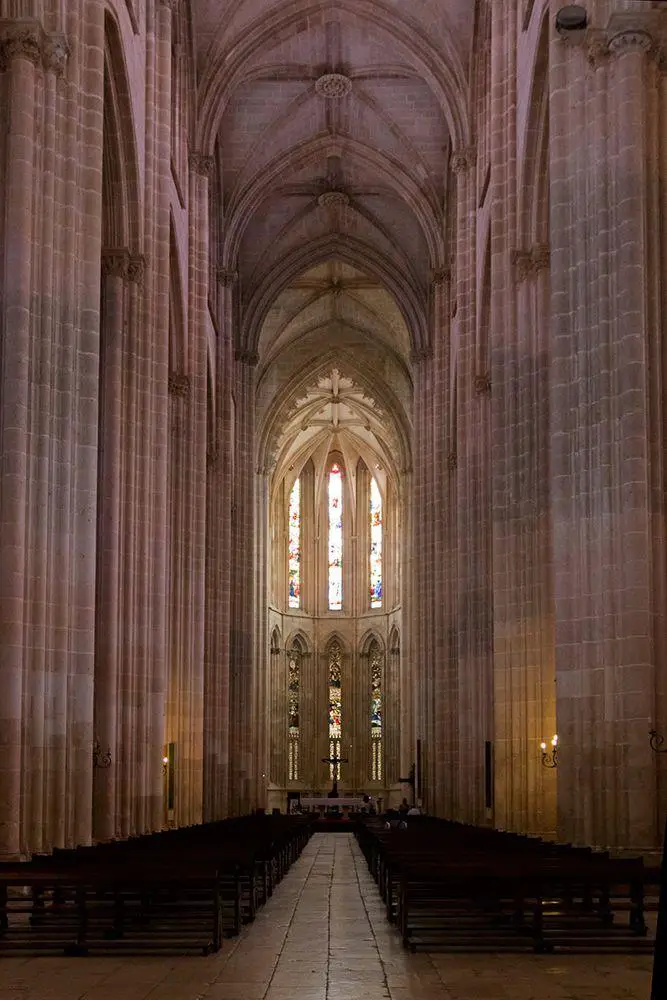
In 1402 – 1438 the design of the structure changed to a different style – Flamboyant Gothic. Works in this time were led by English architect Huguet and he set an ambitious goal in the construction of the church – its nave was rised higher – to 32.46 m.
In the second half of the 15th century the architecture style changed to the ornate Manueline style. In 1448 – 1477 works were led by Fernão de Évora, in 1480 – 1515 – by Mateus Fernandes the Elder.
Final works were done in 1532: a tribune in Renaissance style was rised.
Monastery of Batalha was not fully completed but in the 16th century the attention of Portuguese rulers was turned to another great structure – Jerónimos Monastery in Lisbon.
Later history
The gorgeous structure did not suffer too much during the 1755 Lisbon earthquake but much worse were the deeds and neglect by people.
Batalha Monastery was burned down in 1810 and 1811, during the Napoleonic war.
In 1834 Dominicans were expelled from the monastery. Now the ornate structure was standing empty.
Happily this did not last for too long – in 1840 there was started a restoration, initiated by king Ferdinand II. This work lasted until the beginning of the 20th century and in 1907 Batalha Monastery was declared a national monument.
Since 1980 here is located museum and Batalha Monastery is considered to be one of most impressive Gothic and Manueline structures in this part of Europe.
Description
Monastery of Batalha forms a single structure with complex configuration. Diverse rooms – parts of this structure have different history and own names.
Most buildings were constructed from Porto de Mós limestone which now is in yellow ochre color.
Church
By far the most impressive part of monastery is church which was built in 1386 – 1416. Inside it is 22 m wide – but it seems to be narrow because the nave is 32.4 m high. As it is frequent in Gothic architecture, the simple interior is contrasting with the sumptuous exterior.
Church is adorned with stained glass – in order to make it there was created the first workshop of stained glass in Portugal. The oldest stained glass here is from the late 1430s, but most of the windows were made in the 1520s – 1530s.
Inside the church are tombs of outstanding people, including the architect Mateus Fernandes.
Founders Chapel
Founders Chapel (Capela do Fundador) is a square-formed extension that was built in 1426-1434 as a royal pantheon, the first such solemn structure in Portugal. Interior of this chapel is simple but exterior is splendid example of Flamboyant Gothic and English Perpendicular styles. In a way this structure symbolizes the political and military union of Portugal and England which shows in its build history and symbolics.
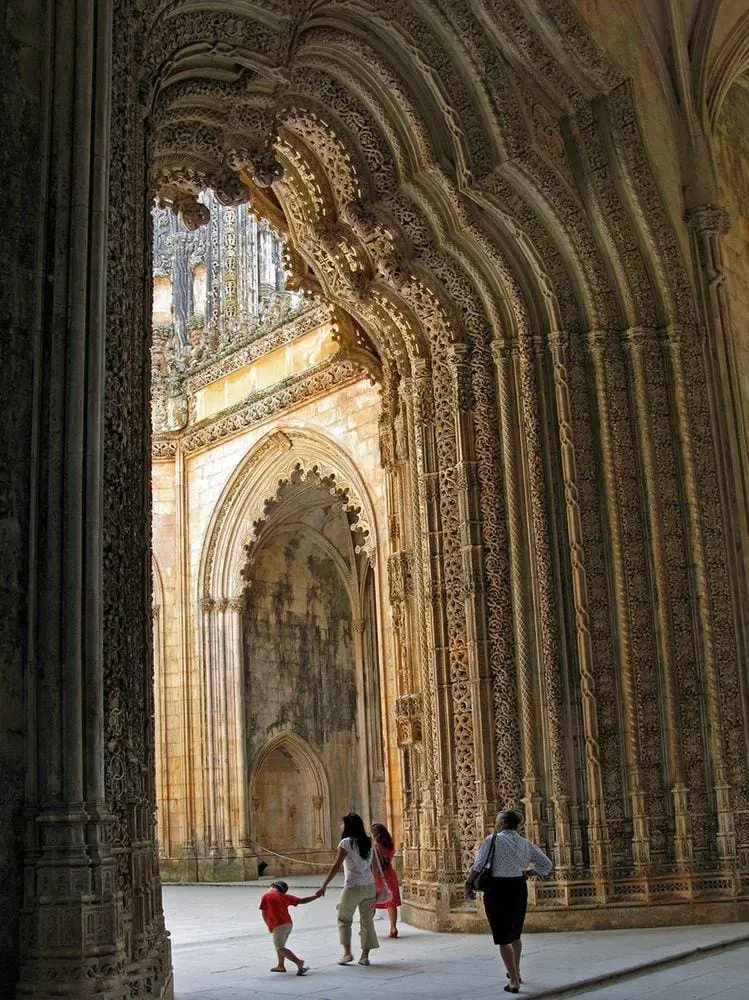
Unfinished Chapels
Next to Founders Chapel stands an octagonal structure – the Imperfect or Unfinished Chapels (Capelas Imperfeitas). This is another royal mausoleum. Its construction was started by King Edward of Portugal in 1437 as a Gothic structure but later, during its construction was redesigned as a very ornate structure in the new – Manueline style. Construction continued until the middle of the 16th century but chapel was left unfinished.
Here are located tombs of King John I and his wife – Philippa of Lancaster.
Chapterhouse
Chapterhouse (Sala de Capitulo) has a structural peculiarity – a 19 m wide star vault without any vertical support. This was an outstanding achievement for its time and construction workers feared to work there. Condemned prisoners were sent to build this chapterhouse and two times it collapsed.
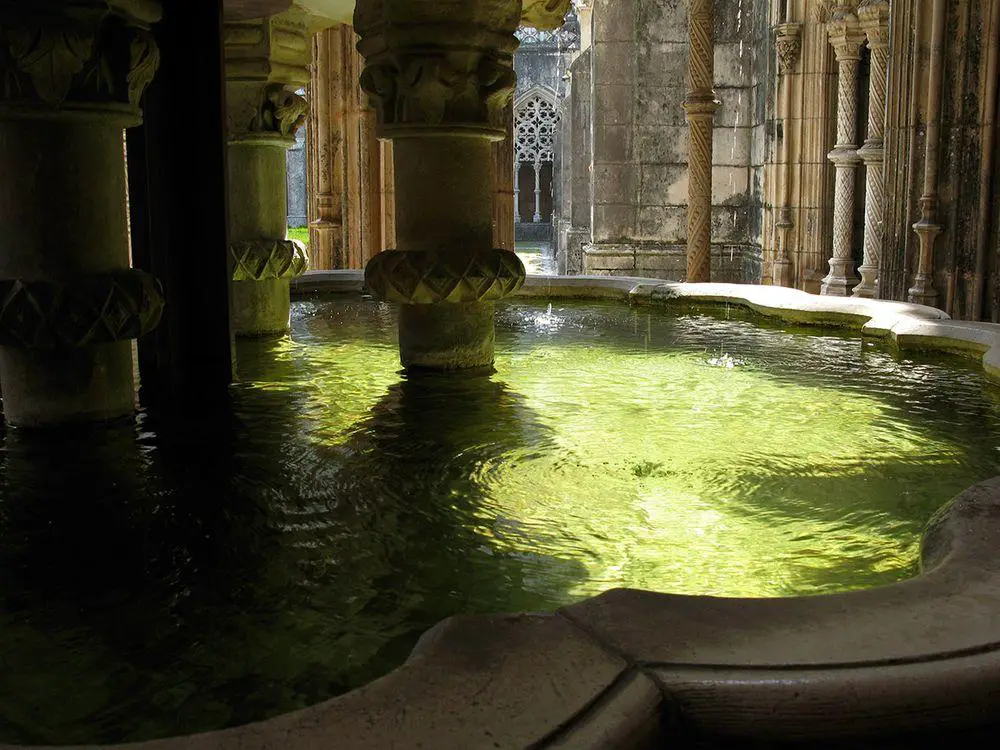
Nevertheless works were completed and, according to some tales, architect Huguet slept under the vault to prove that it is safe.
Lavabo
One of the most gorgeous parts of this unique structure is Lavabo – a sophisticated lattice-work in stone, a complex of a fountain, and two basins surrounded by intricate arches.
 Linked articles
Linked articles
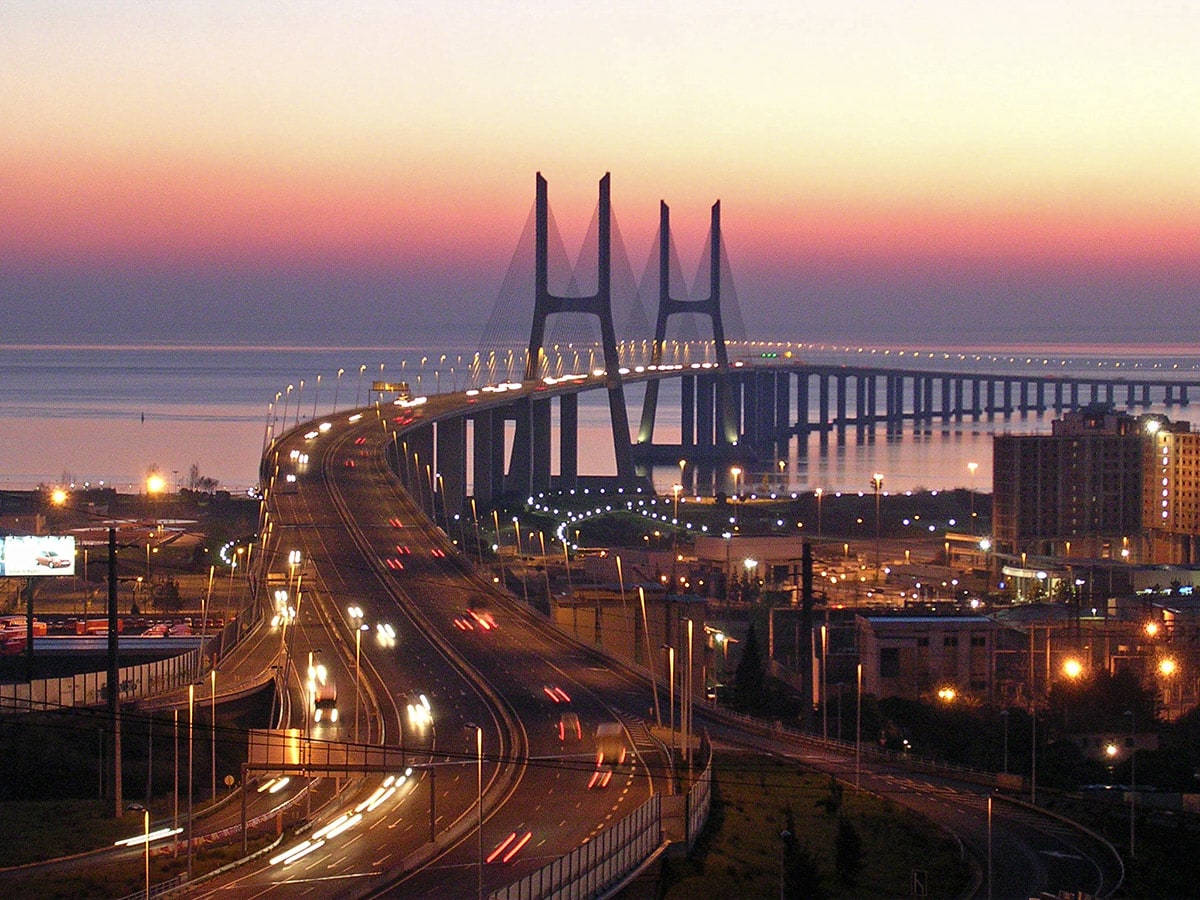
Wonders of Portugal
The country at the far end of Europe has in many ways developed its own style. Portugal has an especially rich cultural heritage, such as historical cities, especially the two metropolises of Portugal – Lisbon, and Porto, as well as palaces and other structures.
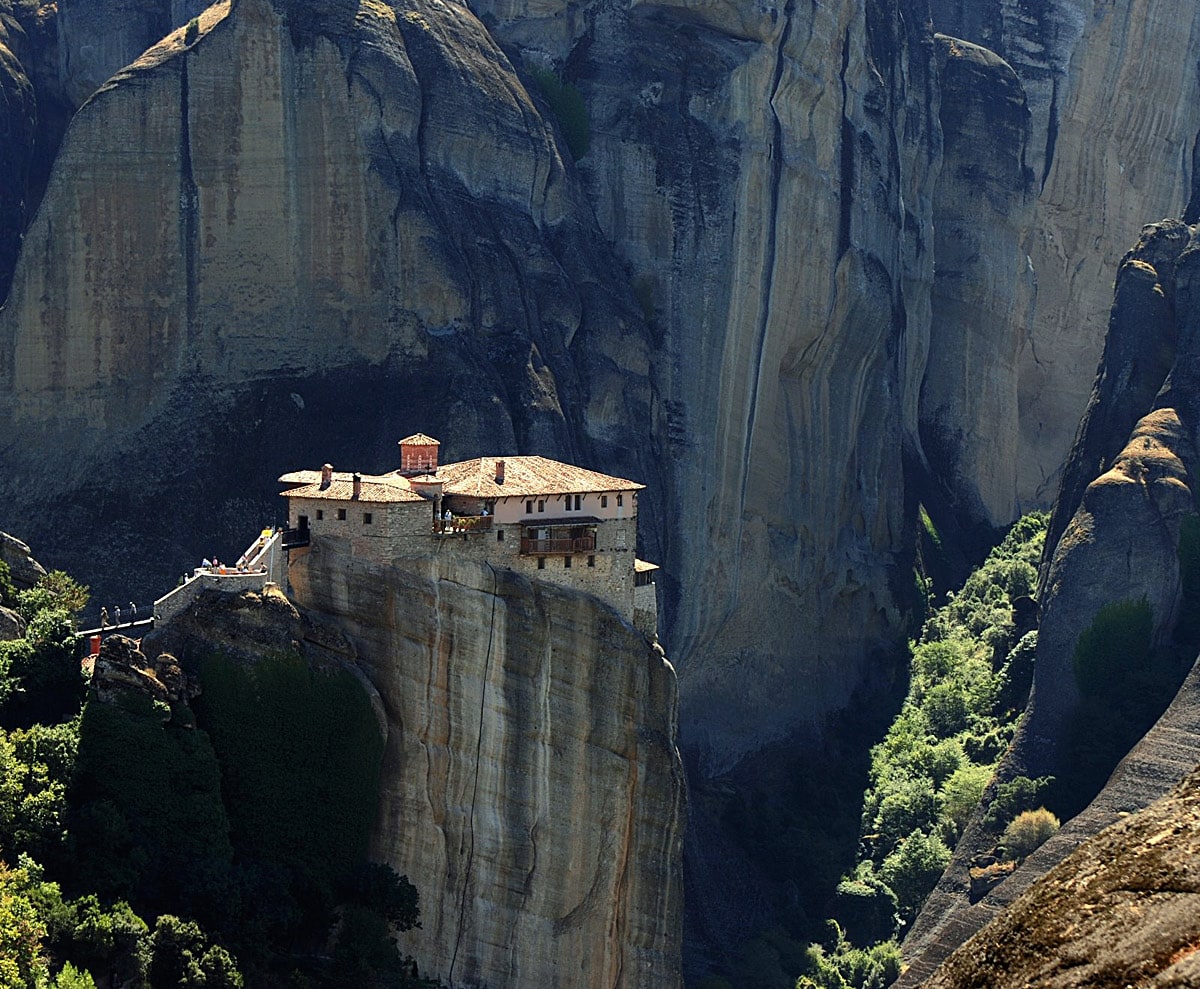
Christian monasteries
Christian monasteries have proven to be a very significant element in history, influencing politics, science, architecture, and art. Often monasteries themselves serve as collectories of written works, art, and crafts.
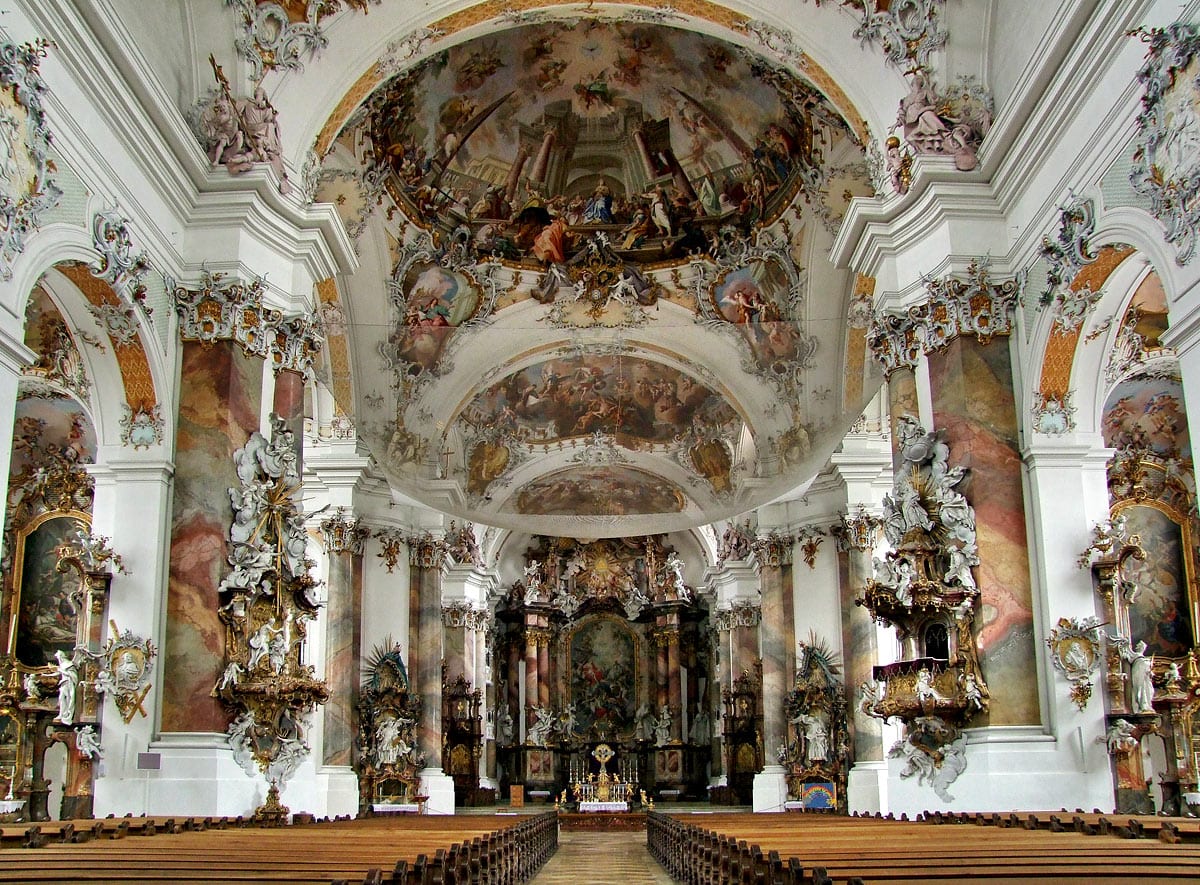
Churches
Throughout the millennia Christian churches have been the epitome of architecture and arts achievements in Western culture.
 Recommended books
Recommended books
The Manueline: Portuguese Art during the Great Discoveries
Broadly spanning the period between 1490 and 1540, the Manueline combined the Portuguese Late Gothic style with an ornamental grammar featuring fantastical maritime motifs and influenced by Mudejar and other styles, and achieved a unique architectural symbiosis that was perfectly emblematic of the country and of the monarch after which it was later named.
Churches of Portugal
Briefly discusses the history of Portuguese cathedrals, shows Romanesque, Gothic, Manueline, Renaissance, and baroque churches, and looks at architectural details, altarpieces, statues, tombs, ceilings, and fountains.

